About Daisen
Daisen is a granary region covered in lush mountains and rice fields situated in the south of Akita. The surrounding mountainous landscape changes dramatically season to season and the area supports a long history of local events, traditions and festivals. Known as Hanabi Town and famous for the annual national fireworks competition, Omagari Hanabi, Daisen boasts a display for every month of the year.
This page features a collection of articles written by current and previous members of the Daisen City Board of Education team, sharing some of their favourite places around town. Hopefully their stories provide some insight into what life is like in rural Northern Japan.
Life in Daisen
Life in Daisen — Josh Hatch
2024-09-01
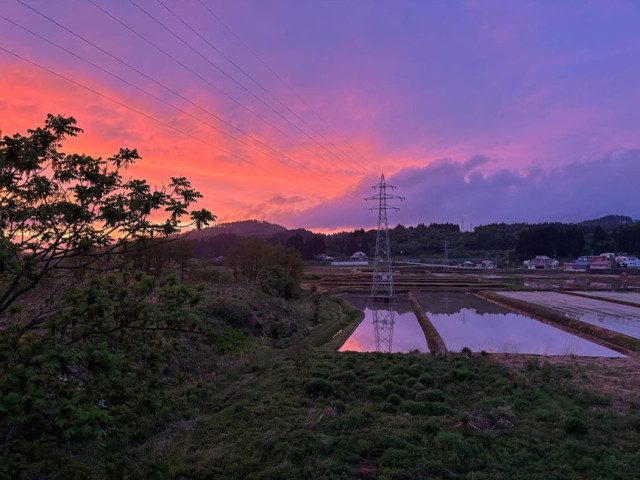
Accurately conveying just how lucky I am to have wound up in this weird and wonderful part of the world is a herculean task. I hope that with this article, I can show you just a fraction of what makes Daisen such an amazing place to live. On arrival, the most immediately striking thing about Daisen is how beautiful the nature is. Being as rural as Daisen is, the city and its towns are enshrouded in an untouched nature that is hard to come by these days. Daisen is a hiker’s paradise. Mountain paths, rolling rivers, campgrounds and nature trails are dotted right, left, and centre. The nature creates some of the most incredible scenery I’ve come across in my travels. My apartment windows overlook sprawling rice fields with rolling mountains in the distance. The Fuji-like Mount Chokai looms off on the horizon, and the sunsets are straight out of a water-colour painting.
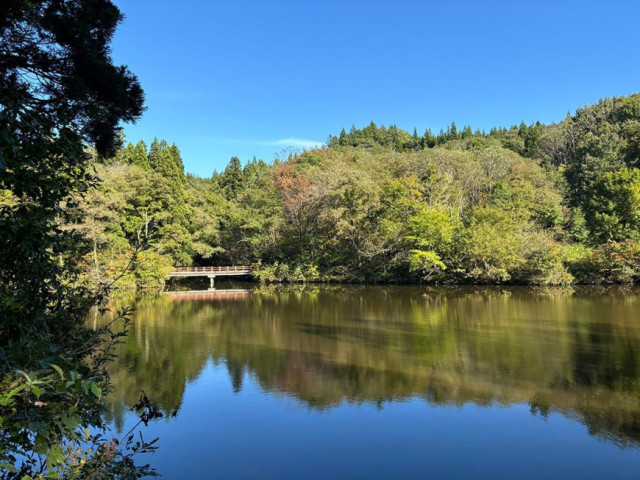
Apart from the nature, there are two inescapable facts about life in Daisen. Firstly, winter is tough. Snowshoes and gum boots are left caked in dust for months on end. Kerosene canisters and snow shovels are stacked under stairways and in car trunks. Summer days still see you passing snow poles and snow fences lining the roads, as snowploughs sit idle in garages and carparks. I haven’t experienced winter here yet, but its effect on life in Daisen is unmistakable even in the height of the sweltering summers.
Second, is the declining population. Daisen city, is relative in size to my home city of Sydney Australia, except it has less than 2 per cent of Sydney’s population. Northern Japan in and of itself has a small population compared to the rest of the country, but this feeling is exacerbated by the rapidly declining population. Of all the prefectures in Japan, Akita (where Daisen city is located) has one of the highest rates of population decline in the country. The Junior High School I am based at has around 70 students total, which is quite large compared to some of the neighbouring schools. My school back home had more than 100 students per grade. This difference is staggering, and it really permeates throughout every aspect of life.
I walk to the train station on a Friday night, past abandoned shops and homes with not a single other person in sight. I often visit friends who live in the town over from me. The trip is a thirty-minute drive through forest and mountains with not another car on the road. On these relatively short drives, I have seen herons, hawks, bats, frogs, tanuki, and on a particularly memorable occasion, a bear.
Second, is the declining population. Daisen city, is relative in size to my home city of Sydney Australia, except it has less than 2 per cent of Sydney’s population. Northern Japan in and of itself has a small population compared to the rest of the country, but this feeling is exacerbated by the rapidly declining population. Of all the prefectures in Japan, Akita (where Daisen city is located) has one of the highest rates of population decline in the country. The Junior High School I am based at has around 70 students total, which is quite large compared to some of the neighbouring schools. My school back home had more than 100 students per grade. This difference is staggering, and it really permeates throughout every aspect of life.
I walk to the train station on a Friday night, past abandoned shops and homes with not a single other person in sight. I often visit friends who live in the town over from me. The trip is a thirty-minute drive through forest and mountains with not another car on the road. On these relatively short drives, I have seen herons, hawks, bats, frogs, tanuki, and on a particularly memorable occasion, a bear.
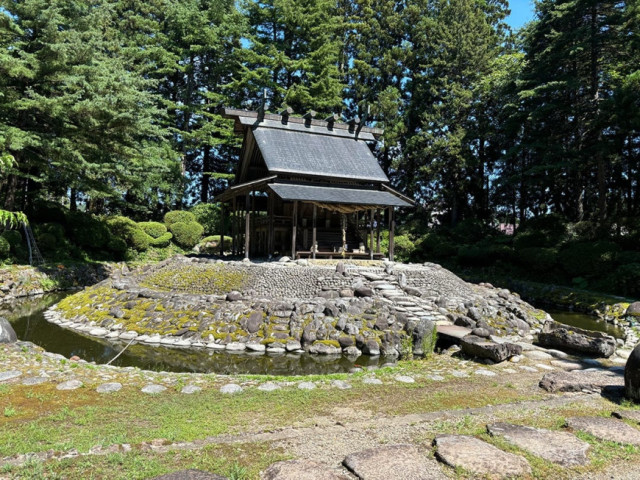
In my first few weeks in Daisen, I was without a car due to an unfortunate “wheel removing itself from vehicle” incident. As unfortunate as that was, it turned into its own mini blessing. It was just in time for the cherry blossoms to bloom. I would walk through my quiet little town to a local butchers. I would get a hot lunch and walk to a park near my house that a neighbour had recommended to me in passing. There I would sit in the dead quiet reading in the cool spring breeze. This is a habit I have kept through all of summer and into the start of autumn. It is rare to find such pristine and untouched nature right on your doorstep, and I look forward to these moments as a highlight of my weeks. Some may find the quiet and nature difficult to cope with, but all of this lends an incredibly peaceful calm to everywhere I go and everything I do. It gives the city a dreamlike quality. Daisen is an untouched gem in a modern world of busy urbanisation.
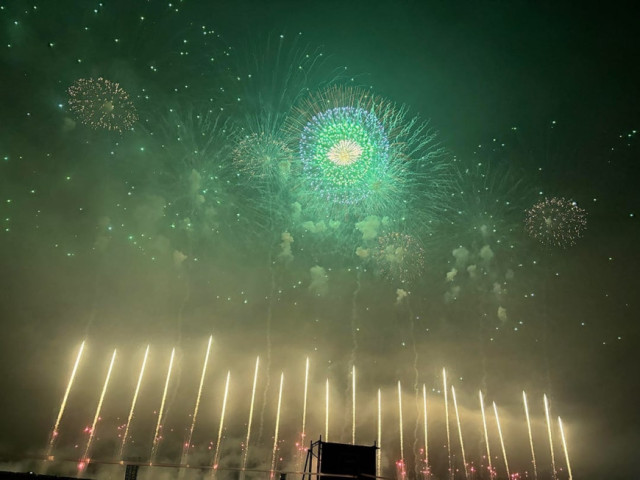
As with most rural towns and small populations, everybody knows each other. Having only lived in big cities before, I was initially turned off to the idea. However, in these last few months I have experienced a sense of community unlike anything I’ve experienced before. Everyone I have met has been incredibly kind and helpful. The respect for others and the land around them really makes the community feel safe and precious. In particular, the sense of community is really put on show for the local festivals. Every town has their own festival or event where the community comes together to put on a spectacle for themselves and visiting tourists. Over the summer, I went to half a dozen of these small festivals around Daisen and the surrounding towns. It was really special to see the cultures of these historic towns celebrated and cared for by both locals and visitors alike.
My small town is known for the Kariwano Otsunakhiki, or the Kariwano Giant Tug of War. This tug of war has been held annually for more than five hundred years, which is more than twice the time Europeans have lived on the Australian continent. The tug of war sees the two sides of the town battling it out in the winter snow, pulling a rope one metre wide and over one hundred metres long. Depending on which side of the town wins, different predictions are made about the years coming rice harvest. Prior to coming to Japan, I didn’t really value this sense of community, but seeing how much joy and life these events bring to the people living here has really changed my opinion and has cemented itself as a value I will search for in all future places I choose to live.
There is so much more to say and highlight about Daisen, but it would be remiss of me to not mention the Omagari Hanabi National Fireworks Competition. Omagari is the largest of the towns making up Daisen city, and it is known for holding the largest firework competition in the entire country. This competition sees an average of 700,000–800,000 visitors, more than ten times the normal population. Hanabi artists from all around Japan present their displays over the course of a few hours. The sight is absolutely breathtaking, and I still occasionally see test shots on my evening drives, or I wake early on a Sunday to the sound of testing in the distance. Watching these shows together with friends in the community is truly unforgettable.
My small town is known for the Kariwano Otsunakhiki, or the Kariwano Giant Tug of War. This tug of war has been held annually for more than five hundred years, which is more than twice the time Europeans have lived on the Australian continent. The tug of war sees the two sides of the town battling it out in the winter snow, pulling a rope one metre wide and over one hundred metres long. Depending on which side of the town wins, different predictions are made about the years coming rice harvest. Prior to coming to Japan, I didn’t really value this sense of community, but seeing how much joy and life these events bring to the people living here has really changed my opinion and has cemented itself as a value I will search for in all future places I choose to live.
There is so much more to say and highlight about Daisen, but it would be remiss of me to not mention the Omagari Hanabi National Fireworks Competition. Omagari is the largest of the towns making up Daisen city, and it is known for holding the largest firework competition in the entire country. This competition sees an average of 700,000–800,000 visitors, more than ten times the normal population. Hanabi artists from all around Japan present their displays over the course of a few hours. The sight is absolutely breathtaking, and I still occasionally see test shots on my evening drives, or I wake early on a Sunday to the sound of testing in the distance. Watching these shows together with friends in the community is truly unforgettable.

At the time of writing this, I have been here for almost eight months. The temperature is steadily dropping as I prepare myself for my first snowy winter. All my colleagues and friends tell me winter in Daisen is like another world. Regardless of how tough the winter may be, I know that for the rest of my life, I will look back on my time here in Daisen as the fondest of memories.
Life in Daisen — Dulcie Hall
2024-03-01
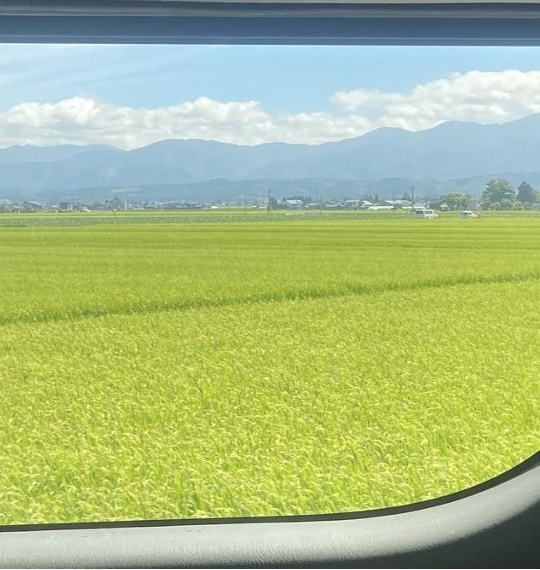
Everything about living in Daisen is exciting. Each season tells its own story, making it impossible to describe simply. I arrived in the midst of summer and was immediately hit by a thick, hot air as I stepped off the plane. Glaring through the window of the car into the city at what seemed like endless rice fields, I contemplated how the tropical climate felt so new to me. I had never seen such perfect, vast greenness in my life. A young, naive version of myself – completely unaware of what I was getting myself into, but eager to find out. I couldn’t take the smile off my face, as it started to sink in that this was my new home.
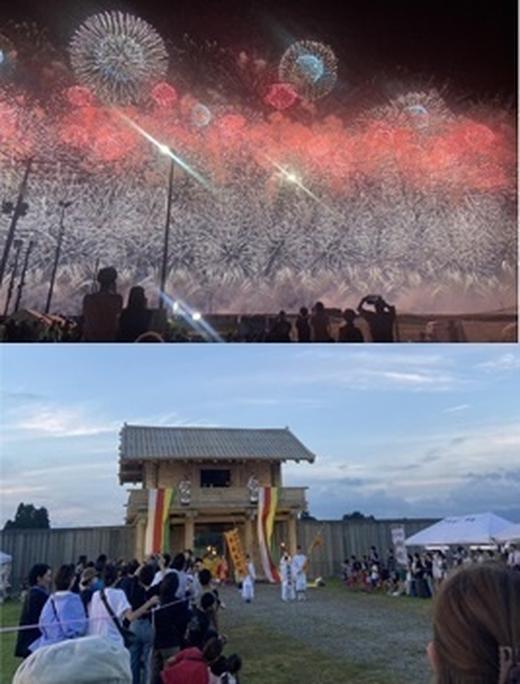
Within my first week, there were a number of summer festivals being held in the city. I was quickly thrown into the Japanese lifestyle; I enjoyed eating takoyaki and choco bananas from the local food stalls, drank Japanese larger along the river and watched traditional dance performances in a language that I couldn’t understand. From day one, the importance of tradition was clear in Daisen, and I admired not only the locals’ deep respect for these customs, but also the genuine joy they take in these rituals, even in their simplicity. Of course, Omagari Hanabi goes without mentioning; a spectacular firework display that’s renowned nationwide (and even worldwide) – a symbol of pride for the locals. This weekend is the busiest one will ever see Daisen, as thousands of people flock to see the explosions of colour over a backdrop of mountains. Executed with perfect attention to detail, this is not a weekend to be missed.
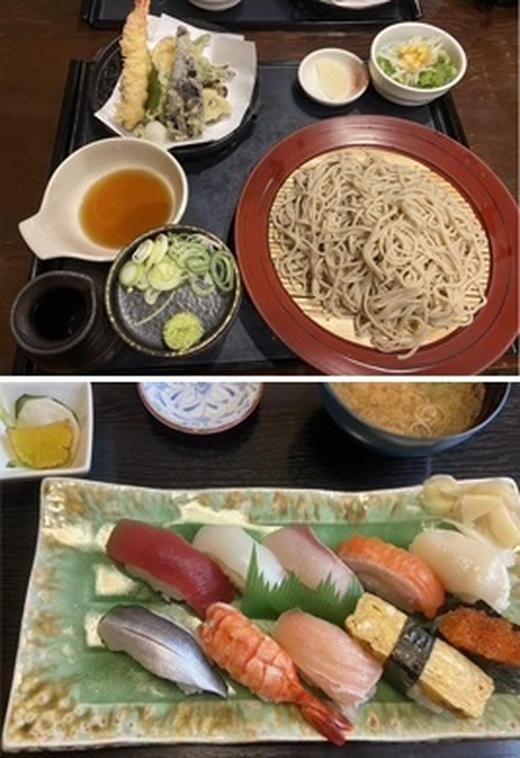
I also quickly learned the importance of food. Food is at the core of Japanese culture and is always a popular topic of conversation among the locals. My first meal in Daisen was at Kitano Suisan in Omagari, which serves soba set meals for lunch and is more izakaya-esque in the evening. Whilst initially slightly confused about how to use the array of dishes in front of me, their cold tenzaru soba has become one of my favourites on a hot summer’s day. I also recommend Nibosuke, a tiny ramen shop near Omagari station serving sardine-based ramen. If a ramen shop is tiny, a little run-down, with one old man running the place then the odds are the food is going to be amazing. From quaint izakayas serving up yakitori, family-ran sushi restaurants passed down through generations, to the healthy, meticulously planned school lunches, Daisen’s food brings people together.
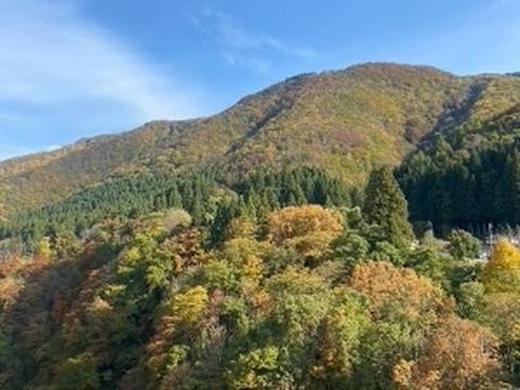
As my summer in Daisen was spent jumping from one air-conned haven to the next, and splashing my cash on electrolyte drinks from vending machines, I welcomed the cooler Autumn temperatures. Autumn colours in Japan are magical. I was told that the ‘koyo’ (the colourful Autumn leaves) are to the Japanese Autumn what cherry blossoms are to the spring. Surrounded by mountains, I only had to drive around the area to see the insanely beautiful shades of orange, red and yellow and leave my house every evening for a mesmerising sunset. I recommend taking a walk around the city, along the river and by the rice fields to absorb the fresh autumn air, and if you fancy venturing out of the city, check out Dakigaeri Valley and Tazawako in Semboku for stunning views of the changing leaves.
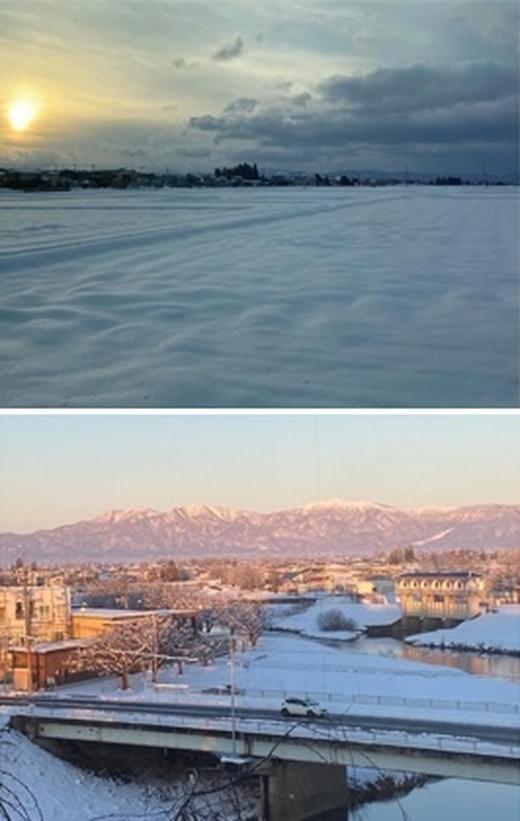
In what felt like an overnight switch, the days became shorter and the temperature dropped. Mornings were spent struggling to get out of the shower because of the bitter air outside, and bracing myself to dig my car out from under the snow before work. Aircon was traded out for jerry cans of kerosene to heat the house and a few too many nights were spent tucked under the kotatsu with mochi and hot tea. My morning commute to work began to resemble a Windows screensaver I used to have in 2012, with infinite blankets of white rice fields and frosted mountains in the distance. As a sprinkle of snow usually results in a complete shutdown of the UK – closures of schools and cancelled transport – I was extremely excited to experience the snow as a way of life, like they do here in Akita. In Daisen, snow season means skiing, snowboarding, snow trekking, and time to indulge in winter delicacies.
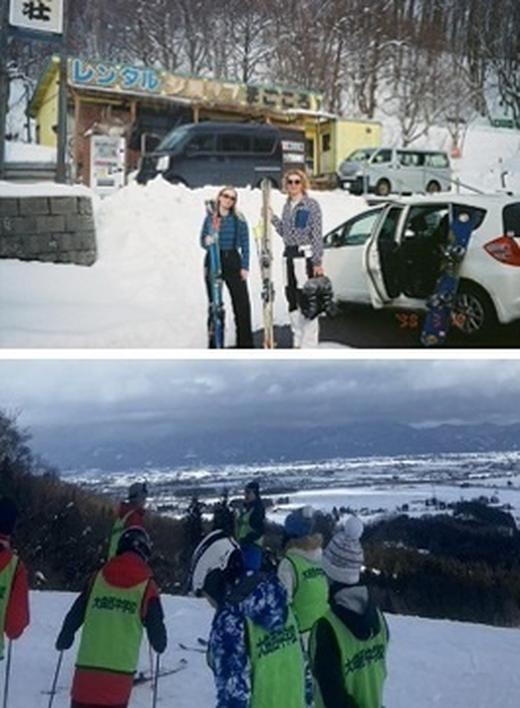
In Daisen, you can enjoy skiing at Ohdai Ski Resort and Family Ski Resort (the latter conveniently a 10-minute walk from the junior high school where I teach). I’d never been skiing before living here, but the beautiful scenery, powdery snow conditions, ease, accessibility and the astonishingly reasonable prices for rental equipment provided the perfect opportunity to learn. I was also lucky enough to join ski lessons during P.E with my students. The very fact that skiing is a part of the school curriculum is a very foreign, extraordinary concept to me, so I was very excited to join in. Obviously, the kids flew past me, having skied pretty much since they could walk, but I will always remember that experience fondly.
Skiing became a part of my weekly routine. I went every weekend in Daisen or around the prefecture, until I was both fulfilled and exhausted. By the end of the season, after many falls and unintentional flips, I can just about say that I’m alright. But I can confidently say that skiing made the long winters fly by. My favourite end to a day on the slopes was a dip in one of Daisen’s many onsens. A rotenburo (an outdoor bath), a cold-water bath and a reasonable price are essential contributors to my ‘elite onsen’ checklist. Both Dakenoyu onsen in Daisen and Sun R onsen in Misato (just outside of Daisen) have all of the above, at only 500 yen per visit. Whilst the nude aspect of onsens may feel a little uncomfortable at first, I learned to love the onsen way of life and I’m unsure if anything will ever top my levels of relaxation at those times.
Skiing became a part of my weekly routine. I went every weekend in Daisen or around the prefecture, until I was both fulfilled and exhausted. By the end of the season, after many falls and unintentional flips, I can just about say that I’m alright. But I can confidently say that skiing made the long winters fly by. My favourite end to a day on the slopes was a dip in one of Daisen’s many onsens. A rotenburo (an outdoor bath), a cold-water bath and a reasonable price are essential contributors to my ‘elite onsen’ checklist. Both Dakenoyu onsen in Daisen and Sun R onsen in Misato (just outside of Daisen) have all of the above, at only 500 yen per visit. Whilst the nude aspect of onsens may feel a little uncomfortable at first, I learned to love the onsen way of life and I’m unsure if anything will ever top my levels of relaxation at those times.
Before I knew it, the snow began to melt, and the flowers began to bloom. Schools, supermarkets and shops became ‘sakura’ themed which meant that spring was around the corner. In Daisen, we’re lucky enough to get all the beauty, without the masses of people in more populated areas of Japan. You only have to take a walk around the city or bike along the river to see sakura-lined streets in all their glory. One of my other favourite spots in Daisen in springtime is Himegami Park. It’s only a short hike to the top of the mountain overlooking the city I now call home. You can see an array of wildflowers, trees, landscapes and some fluffy animals if you’re lucky (or unlucky). A tall tower sticks up above the mountain, which is usually my signal to tell me that I’m nearly home during weekends that I’ve done a road trip away. With lovely views and the occasional hidden shrine along the way, Himegami is a must-do activity in spring. Every season in Japan has its perks, but spring is pretty mesmerising.
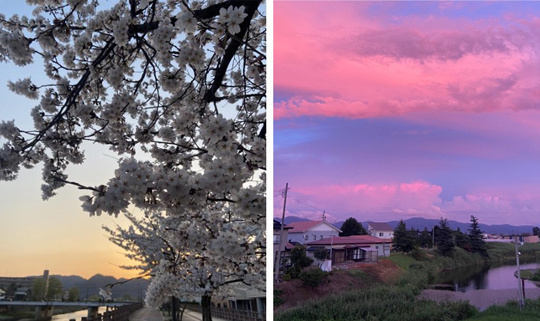
Now, summer is just around the corner and I’m preparing to experience each season all over again - a lot more experienced and a less naive version of myself. I could talk forever about impressive places to visit in Daisen, but it’s truly the small, everyday aspects that make it so special. It’s the kindness of the locals – feeling so wholly welcomed and taken care of, despite differences in culture and language. It’s bumping into excited students at the shops, rambling words at a speed too fast for me to understand. It’s making friends with the local shopworkers purely because you go every week, and it’s being taught Japanese by local volunteers, giving up their time weekly to help me.

Life in Daisen is simple and slow-paced. With its simplicity comes an overwhelming sense of community, comfort and contentment that makes Daisen truly feel like a home away from home. I know that I’m biased, so come and experience it for yourself.
Life in Daisen — Aidan Simpson
2023-09-01
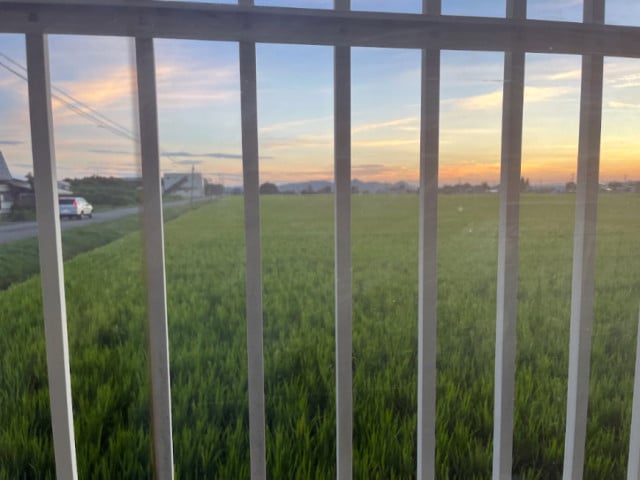
During my first meal, an hour after landing, I admitted I had not heard of Akita before I received my placement. In the same way many only know California, New York, and Texas, I only knew Tokyo, Kyoto, and Hiroshima. However, once I did my research, I realized that Daisen is an enviable place to be!
Within Daisen, I am living in the town of Ota, on the eastern side of the city, towards the mountains. Coming from the Virginia piedmont, waking up everyday to the imposing, grand mountains is a treat, and one that also gives a calming sense of familiarity. I was told that the background artist for Studio Ghibli is from Ota, and it is obvious how the beauty of his hometown inspired his work in films such as Princess Mononoke and My Neighbor Totoro.

In a world of ever increasing stressors, the peaceful atmosphere of Daisen is much appreciated. Perhaps it goes without saying, but moving to a foreign country where your language ability is comparable to a 3 year old is scary. Thankfully everyone, and I mean everyone, has been so kind and gracious. From those at the Board of Education, teachers, fellow ALTs, my neighbors, post office workers, and the waitress who gave me a grammar lesson when I mixed up the words for “2 people” and “2 things.” I am very grateful that everyone in Daisen is so patient and understanding.
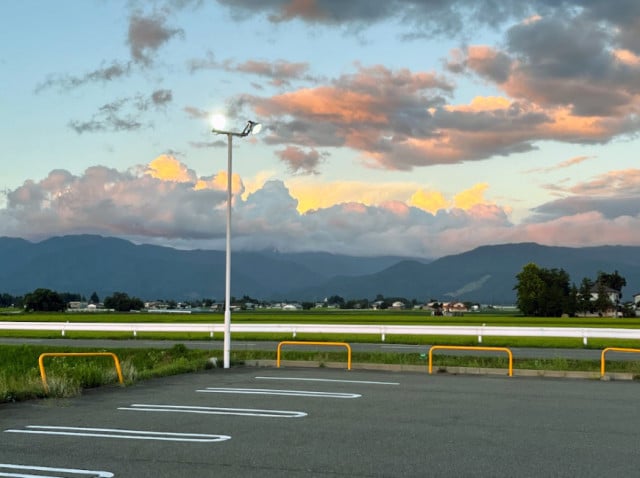
Although my time here has been brief, there has never been a lack of events. Summer was full of festivals, and any tourist attraction is worth visiting with autumn leaves. And of course, no discussion of Daisen is complete without the Omagari Fireworks. Calling it a spectacle undersells how impressive it is. Additionally, there are many fireworks factories in the area you can take a tour of!
I love a good hike and natural beauty, which Daisen is not lacking whatsoever. There are numerous waterfalls, parks, river walkways, and beautiful sites in the city. It also feels like anywhere in the city is an amazing view. The sunsets are also amazing.

Winter has started as of writing, and it presents a new challenge and adventure. They say Japan is famous for its four seasons, and in Daisen you really experience it. I cannot wait to see what winter and spring bring!

